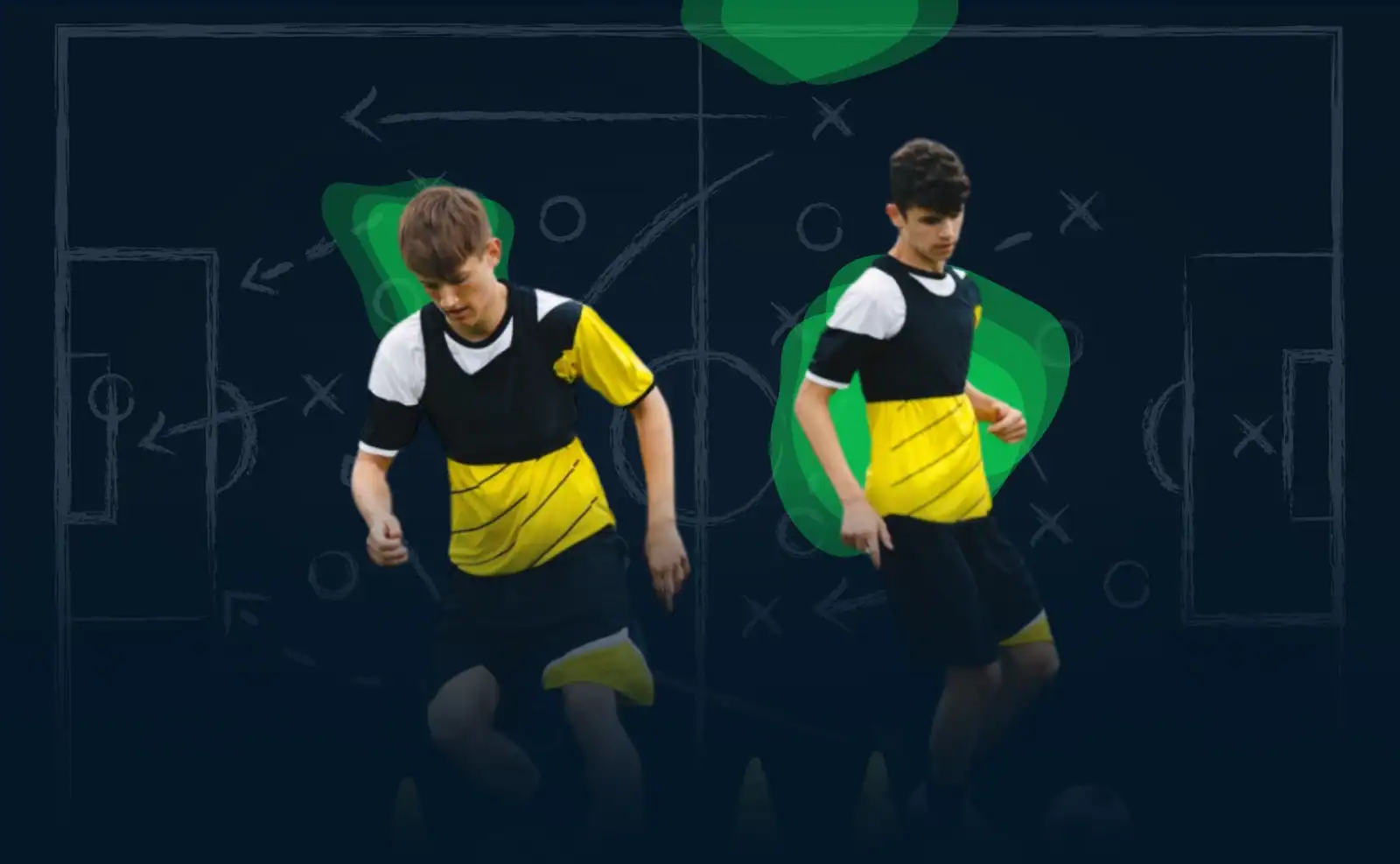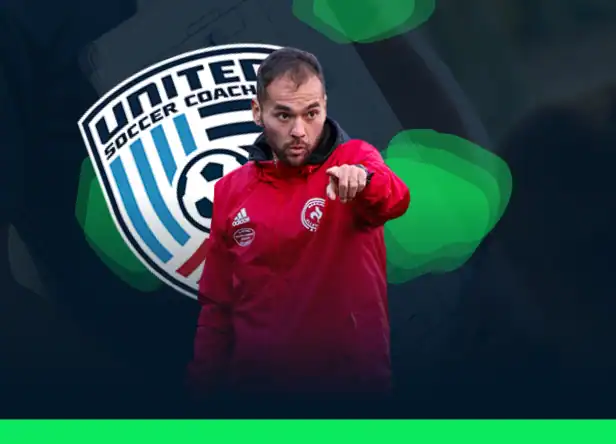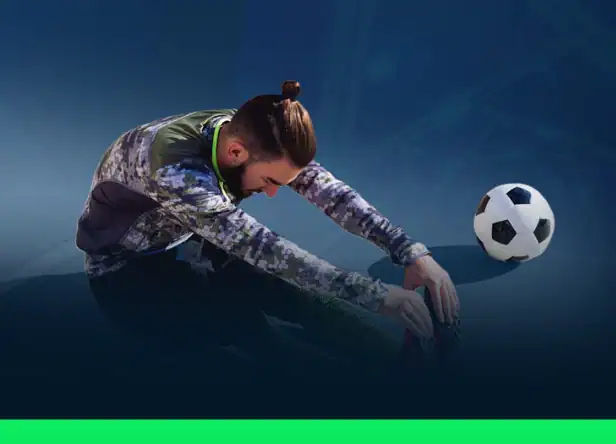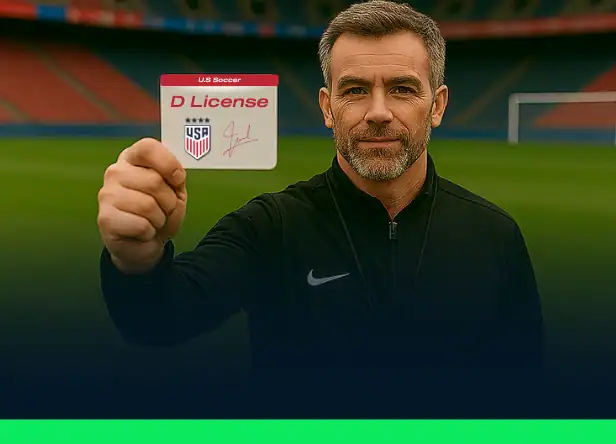Do you know the 8-a-side version of soccer? This format gives you the opportunity to explore a wide range of strategies, formations, and game plans. 8v8 soccer demands versatility, quick decision-making, and compact tactical structures. Adopting the right formation-whether the balanced 2-3-2, midfield-dominating 2-4-1, press-intensive 3-2-2, or the space-control 3-3-1, can dramatically influence your team’s performance. Recognizing how these formations parallel the traditional 11v11 game will elevate your tactical approach and help build adaptable squads.
In this article, you’ll discover the world of 8v8 soccer, which formations to choose, and the key differences compared to traditional 11v11.
What is 8v8 Soccer?
Definition of 8v8 Soccer
8v8 soccer modifies the standard game by featuring eight players per team – seven outfield players plus a goalkeeper – instead of the usual eleven. This format is particularly popular in youth soccer (U8 to U12) and regional competitions, as it encourages individual skill development, tactical education, and increased involvement from every player on the field.
8v8 Soccer vs. 5v5 Soccer
Both 8v8 and 5v5 soccer follow the same rules as 11v11 but with fewer players and adapted field dimensions. 8v8 is often played at local or regional levels because of its accessibility.
- Field size: Half of a standard soccer field: 60–70m x 45–55m, with a size 5 ball.
- Goals: 6m x 2.10m, with the penalty spot at 9 meters.
- Penalty spot: Approximately 9m from the goal line.
- Ball: Standard size 5 soccer ball.
- Squad: 7 outfield players + 1 goalkeeper.
Key Differences Between 8v8 and 11v11 Soccer
| Aspect | 8v8 Soccer | 11v11 Soccer |
|---|---|---|
| Squad Size | 7 outfield + 1 goalkeeper | 10 outfield + 1 goalkeeper |
| Field Size | Smaller, tighter spaces | Larger, more room for long passes |
| Player Involvement | Every player has increased touches | More role specialization |
| Tactical Focus | Quick transitions, compactness | Spatial exploitation, structured build-up |
| Skill Development | Emphasizes individual decision-making | Emphasizes team shape & positional play |
| Fitness Demands | Short bursts of high intensity | Sustained endurance & positional coverage |
Both versions of the game provide unique experiences: 8v8 favors agility, skill development, and all-around involvement, while 11v11 focuses more on tactical organization and role specialization.
Essential 8v8 Rules to Know
- Match duration: Either 2 x 30 minutes or 3 x 20 minutes (maximum = 60 minutes).
- Kick-off: You cannot score directly from kick-off, and opponents must be at least 6 meters away.
- Free kicks: Can be direct or indirect (same as 11v11) with a wall set at 6 meters.
- Penalty area: 26m x 13m.
- Goalkeeper Restrictions: Must restart play by hand or with the ball placed on the ground. No volleys or half-volleys are allowed—otherwise, an indirect free kick is given, taken from the 13-meter line. The goalkeeper cannot pick up the ball with their hands from a teammate’s pass—otherwise, the indirect free kick is awarded from the spot of the infraction.
- Slide tackles: Strictly forbidden.
What Are the Best Formations in 8v8 Soccer? The Four Most Effective 8v8 Formations
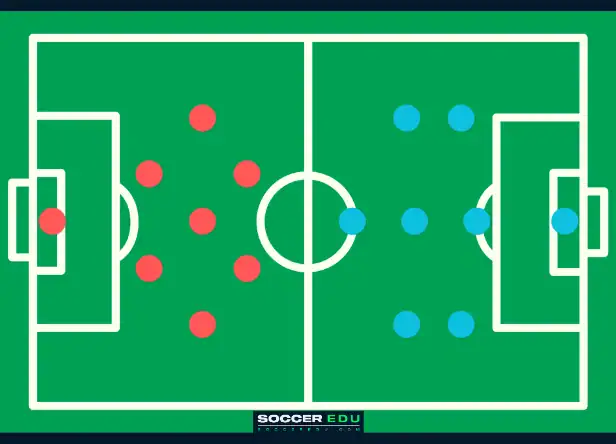
In 8-a-side soccer, tactics take on a new dimension. With three fewer players than in 11v11, coaches use different formations to adapt. Here are some of the most common tactical setups:
The 2-3-2 Formation: The Balanced Workhorse
Setup: 2 defenders, 3 midfielders, 2 forwards.
Tactical Focus: This formation offers defensive solidity combined with sufficient midfield presence and attacking support. The midfield trio forms a compact unit that controls the central channels, while the two forwards provide options for fast breaks and width.
- Defensive: The two defenders organize centrally, covering wide spaces with support from midfielders dropping back as needed.
- Midfield: Three midfielders enable fluid passing combinations and control the game’s rhythm.
- Attack: Two forwards provide balance between possession retention and penetration.
Comparison: This system mirrors the 4-3-3 in 11v11 soccer with its emphasis on midfield control and offensive width.
The 2-4-1 Formation: Midfield Domination
Setup: 2 defenders, 4 midfielders, 1 striker.
Tactical Focus: Designed to control possession and dictate the tempo, the 2-4-1 formation floods the midfield to outnumber opponents, creating passing triangles that facilitate ball retention and progression.
- Midfield Overload: Four midfielders constantly create passing lanes and stretch opponents.
- Attack: The lone striker acts as a target, holding up ball play and linking midfield with attack.
- Defense: Two defenders stay compact but rely heavily on disciplined midfield tracking and coverage.
Comparison: Comparable to the 4-2-3-1 in the senior game, with an emphasis on creative midfield playmakers.
The 3-2-2 Formation: High Press and Quick Transitions
Setup: 3 defenders, 2 midfielders, 2 attacking midfielders, and 1 striker.
Tactical Focus: Optimized for a high-intensity press, this formation aims to quickly recover possession and launch rapid counterattacks.
- Defense: Three defenders provide a stable backline; wingbacks may push forward to widen attacks.
- Midfield: Two midfielders act as shields and distributors.
- Attack: Two attacking midfielders support a lone forward, creating overloads and quick combinations.
Comparison: Closely resembles the 3-5-2 in 11v11, focusing on pressing and fluid transitions.
The 3-3-1 Formation: Space Control and Compactness
Setup: 3 defenders, 3 midfielders, 1 forward.
Tactical Focus: Focused on strengthening spatial control, this formation uses a solid defensive base and a well-organized midfield line that governs width and depth.
- Defense: Three compact defenders guard key channels.
- Midfield: Trio balances defensive duties with offensive support, especially wide midfielders who hold positions to prevent counterattacks.
- Attack: The lone striker must combine mobility and finishing skills to exploit spaces.
Advanced Tactical Note: This shape can morph into 3-3-2 in possession by pushing a defender forward, expanding attacking options.
Additional Tactical Considerations in 8v8 Soccer
Adaptability on the Fly
Given the fast pace and limited space in 8v8, players and coaches should emphasize flexible roles and fluid formations. Quick transitions between:
- Defensive compactness
- Midfield control
- Fast attacking plays
Wide Play and Overlaps
Wide midfielders (or wingbacks) often serve dual roles, providing defensive cover and attacking width. Using overlaps and underlaps to stretch defenses is vital in 8v8, especially given the smaller pitch where space is at a premium.
Pressing Triggers
Understanding when and how to press effectively, such as upon the opponent’s poor touches, backward passes, or isolations, is crucial. Coordinated team pressing forces turnovers.
Player Rotation and Position Swapping
To create unpredictability, midfielders and forwards should interchange positions dynamically, making it harder for opponents to mark or intercept passing lanes.
How to Build Your 8v8 Game Plan
- Evaluate Your Squad Strengths: Technical, physical, and tactical traits should guide formation choice. For example, select 2-4-1 if your midfielders excel in possession or 3-3-1 for defensive solidity.
- Analyze Opponents: Against ball-dominant opponents, deploy press-heavy formations like 3-2-2. Against counter-attacking teams, stick with balanced or defensive shapes.
- Set Pieces Strategy: In 8v8, where players are fewer, rigorous planning of corners, free kicks, and throw-ins can yield significant leverage.
- Conditioning Focus: Train for explosive bursts, agility, and quick recovery rather than long-distance stamina, matching the stop-start nature of the game.
- Tactical Drills: Use small-sided games and scenario drills to practice formation shifts, pressing sequences, and attacking transitions.
Final Thoughts on 8v8 Soccer Formations
The 8v8 format offers a rich tactical environment to develop young players’ skills, tactical discipline, and adaptability. Whether aiming for midfield dominance, high pressing, or balanced play, the key is to select a formation that maximizes your players’ strengths and fosters a proactive, intelligent team approach. Coaches should empower players to shift fluidly between roles and formations during intense, space-restricted gameplay, building a resilient and cohesive unit ready for higher levels of soccer.

